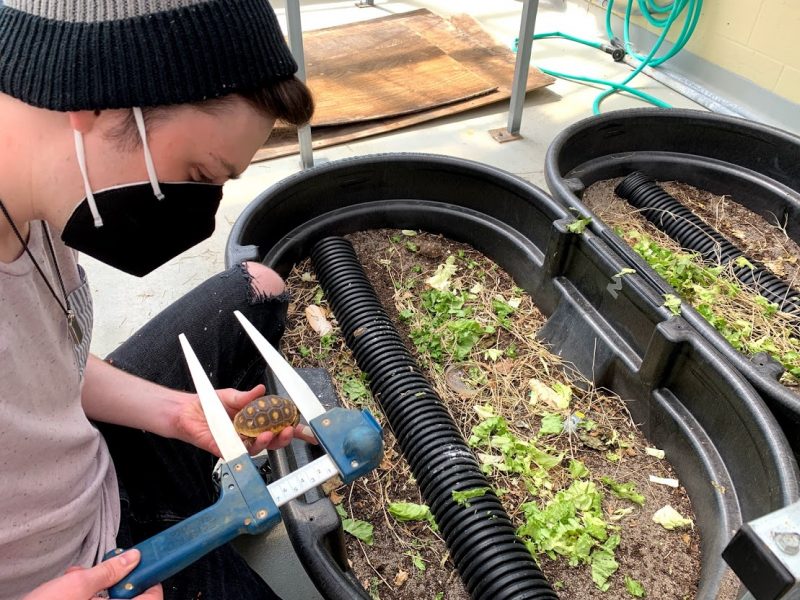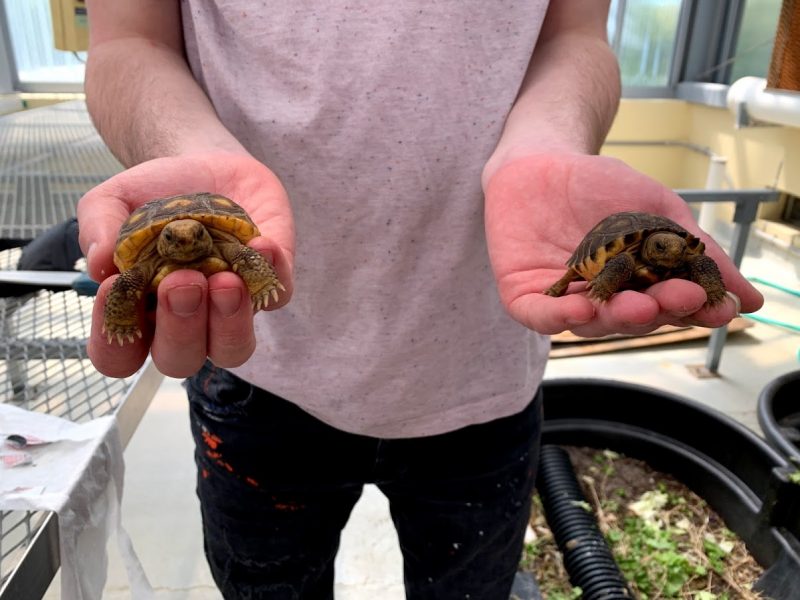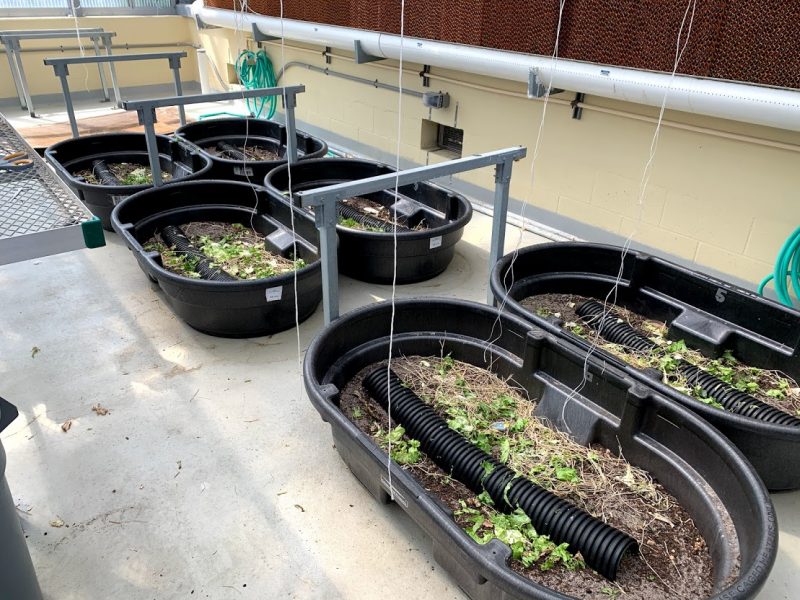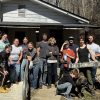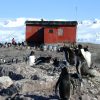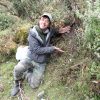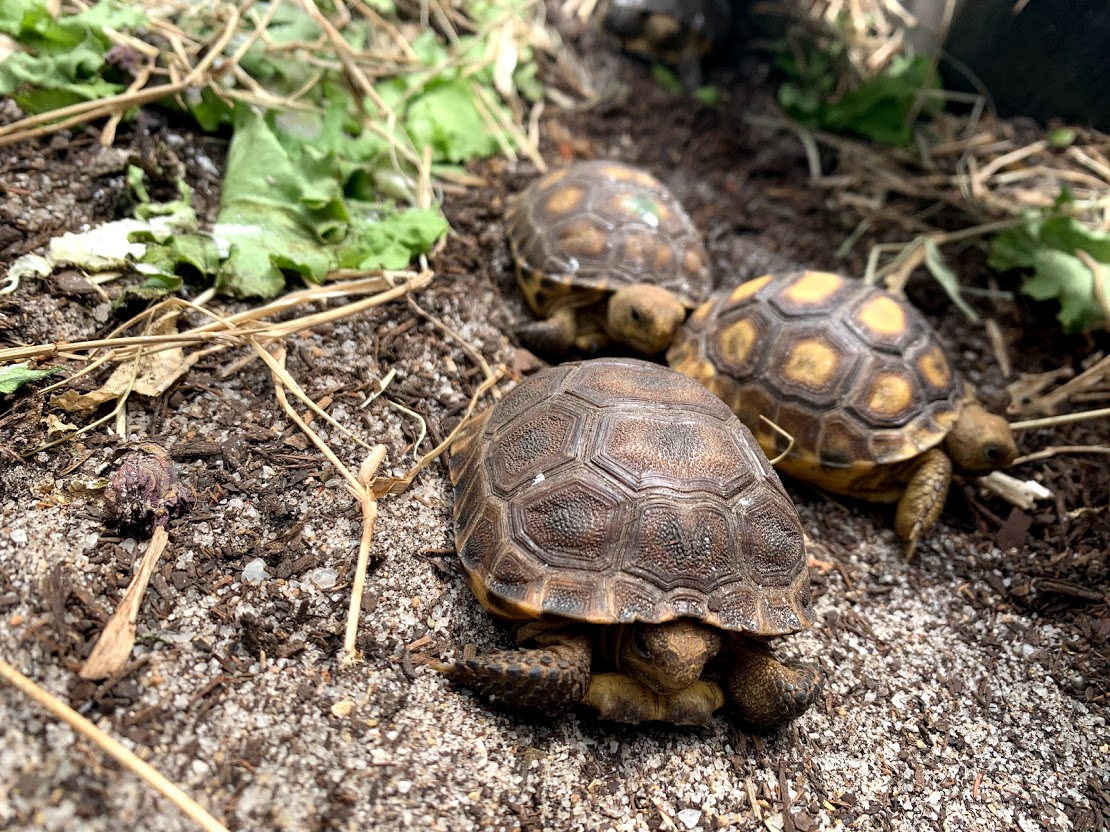
Thirty-seven gopher tortoises like these little ones have been entrusted to Professor Goessling and his student researchers. Photo: Celina Ceballos ’21
Chomper, a baby gopher tortoise the size of a large orange, spends its days really putting away the lettuce, kale and cabbage in the Eckerd College greenhouse.
“It was the first one hatched, and it’s the biggest,” said Assistant Professor of Biology Jeff Goessling, Ph.D. “We named it Chomper because it just eats and eats.”
The tiny grazing machine is one of 37 gopher tortoises entrusted to Goessling and his student researchers for a head-starting program in conjunction with the Alabama Department of Conservation and Natural Resources. Surviving to maturity is a challenge for gopher tortoises, who can grow to be about 15 inches long, because the eggs are food sources for predators and it takes them years to reach a size where they aren’t easy prey, he explained.
“This [Alabama] population is so spread out and dwindling that it could be gone in a blink,” Goessling said. “I prefer habitat interventions, but I understand something more drastic was needed to protect this group of animals.”
Eggs from Alabama burrows documented during summer 2020 were harvested two weeks before hatching and transported into an incubator prior to coming to Eckerd College in the Fall Semester. A team of students helped Goessling feed and care for the gopher tortoise hatchlings, and also collect data about their development such as growth. Now they live in the College greenhouse in dirt-filled tubs with makeshift burrows until they are big enough to be released into their native habitat.
Sophomore Sean Jacobson measures and tends gopher tortoises in the Eckerd College greenhouse.
Photos: Celina Ceballos ’21
Students will help care for and collect data on the animals until their release sometime in 2022. More hatchlings are expected to arrive later this year. Before last fall, Goessling had never hatched and reared gopher tortoises, though many had been in his care. As with most new parents, the anxiety of guarding new life was an added stressor in an already stressful year.
“For the first six months, you are constantly thinking about them and all the things that could go wrong 24/7,” he said. “Thankfully, this has helped me realize that these are pretty hardy animals. All they need is the chance to grow and they will be fine.”
Head-starting has another advantage, Goessling admitted: The tortoises can get bigger than they would have foraging in the wild. Chomper is certainly living proof.





